Visit to the Paleozoological Museum of China
I had a free morning before more conference presentations were to start later in the day. Most of the other visitors to Beijing from the conference opted to go to places like the Winter Palace, but given my love for dinosaurs, and knowing about the excellent collection of bird and proto-bird fossils that came from China, I asked my tour guide if she could take me to a place that had good bird fossils on display.
This was apparently a unique request for my tour guide, and she had to ask around for the right place to go. She eventually worked out that the Paleozoological Museum of China was the place to head, so that’s where she, I and the driver headed out, crossing from one end of the city to the other in order to do so.
We parked on a side-street next the museum. I remember that was where I saw a woman with a small dog walking up the street. It was memorable because it was the first dog I had seen within the city. I gather that having a dog is now considered something of a status symbol, for many another symbol of conspicuous consumption. Commenting on it clearly rankled my guide, who grew up in an era when they banned by the Communist Party and were seen as a bourgeois affectation.
Front of the Paleozoological Museum of China
Part of the building’s facade
The interior was a bit on the gloomy side, and other than a father with his child and the single bored-looking female attendants stationed on every floor, there was just my tour guide and me. I paid 20RMB times two and we were in.
The main dinosaur gallery was to our right, containing an atrium where dinosaur bones (and casts) were posed in various positions. I knew I was in for a treat since the first dinosaur I saw was unlike anything I had seen in Natural History museums in North America that I’ve been to.
This is the first thing that greets visitors when entering the main dinosaur gallery: Tsintaosaurus spinorhinus sporting a unicorn-like horn.
The place had the feel of having been built in another time. Despite all of the pot lights illuminating specific fossils, for the most part the place seemed gloomy. Also, there was no air conditioning so as the morning wore on it became increasingly warm during our stay, and thin windows on the various floors of the building were opened to let in air. On the floor of the atrium were the posed dinosaurs stood were squares of dusty-looking astroturf. Yet despite the lack of North American-style polish, there were some amazing things to see here, and thankfully most things were captioned in English as well as in Chinese.
A view of the first floor center gallery looking towards the entrance
An interesting place to put a “Do Not Touch” sign
Flanking the dinosaurs in the middle were the museum’s fish and proto-fish fossils, including a large pickled coelecanth.
The distinctive shape of a “helmet head” Galeaspida, Nochelaspis Maeandrine
Another Galeaspida, Laxaspis Qujingensis
The coelacanth specimen
A slab depicting fossil Lycoptera Davidi
One of the oddest things I saw was the curved and toothed lower jaw of a Helicoprion, a shark-like cartilaginous fish that lived until the time of Triassic period. The theory is that the curved jaw was used to open up ammonite shells, though I can’t help but think that someone is putting two similarly-shaped things together and thinking they are somehow correlated, I bit like saying the beak of a bird ought to be seed-shaped if it ate seeds. Still, it was interesting to see.
Lower jaw of a Helicoprion Bessonovi
Next came the bird fossils. This is what I really came to see, and while they didn’t have too many on display, what they did put put for show were some pretty amazing specimens.
Part of a clade that includes modern birds, this Yixianornis grabaui is one of the first primitive birds to display a modern pygostyle as well as a fan of tail feathers
An example of Confuciusornis, considered to be a precursor and more primitive type of proto-bird than the more famous Archaeopteryx.
This was unlabeled, but from what I can figure out, it is another Confuciusornis
Not considered a bird, but Microraptor gui did have feathers. This is apparently a cast of the holotype specimen.
Listed in English as “Hoopterus gracilis” but which I think must be a typo for “Haopterus gracilis”. Not a bird either, but a type of pterosaur.
This was on an upper floor, but really belongs with the other bird fossils: a labeled example of Confuciusornis sanctus
An example of one of their reconstructions, in this case Caudipteryx dongi (too bad about the glare from the glass case it was in).
After the bird, proto-bird and pterosaur fossils there were some interesting early lizard fossils.
An example of Dalinghosaurus longidigitus
An example of Hyphalosaurus lingyuanensis
A nice example of a frog fossil.
And then there was a nice (and large) example of an early Cretaceous mammal.
An example of Repenomamus giganticus. Again, too bad about the glare from the lights.
Looking back to the atrium at this point, there’s the ever-popular predator/prey display. The sort of thing that seems to be present in most Natural History museums, though in this case with two Chinese-only dinosaurs.
A Monolophosaurus jiangi Attacking a Tuojiangosaurus multispinus (a type of Chinese Stegosaur). Both were listed as “models” (presumably “casts”).
Then we went up to the next floor, which contained more primarily Chinese-only dinosaur fossils.
The very odd-looking Sinokannemeyeria yingchiaoensis, a mammal-like reptile (Dicynodont) set among radiators and astroturf.
Close-up of the head of another Chinese dicynodont, Parakannemeyeria youngi on display
A mounted specimen of Archaeornithomimus asiaticus.
Skull of a Probactrosaurus gobiensis
Tags: Beijing, China, Paleozoological Museum of China
Both comments and pings are currently closed.


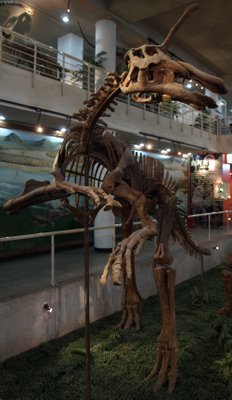
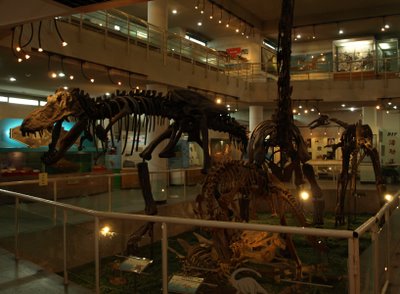
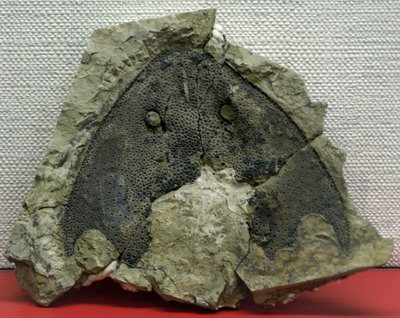
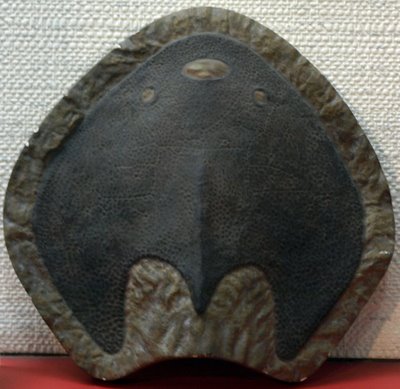
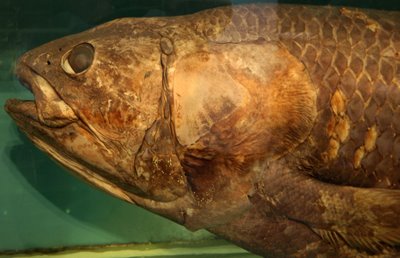
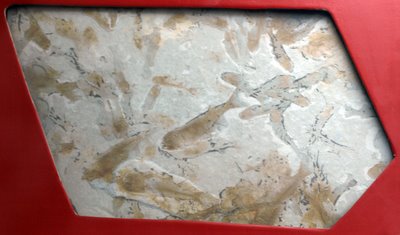
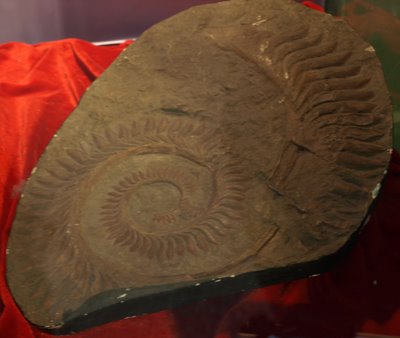
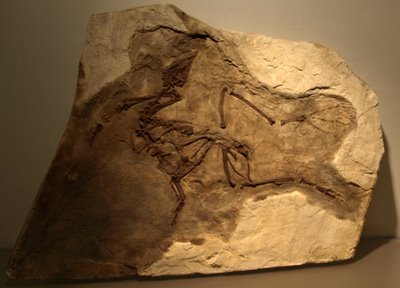
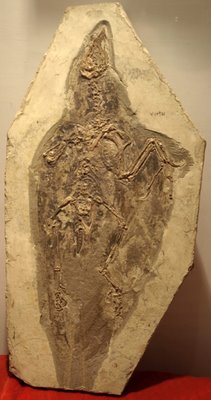
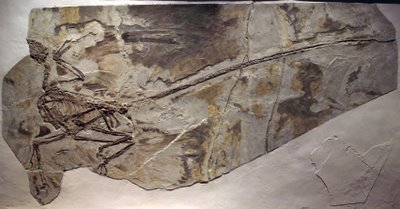
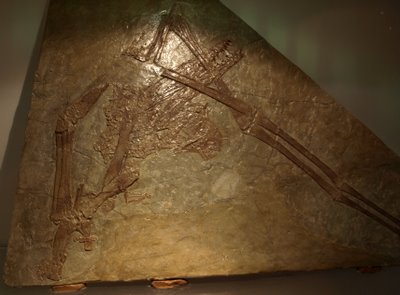
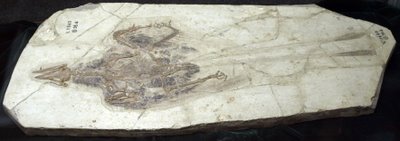
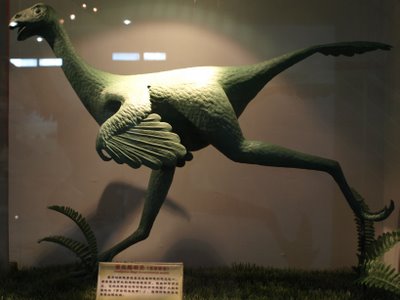
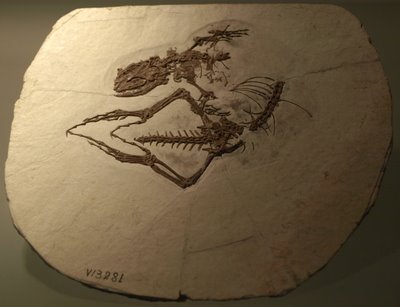
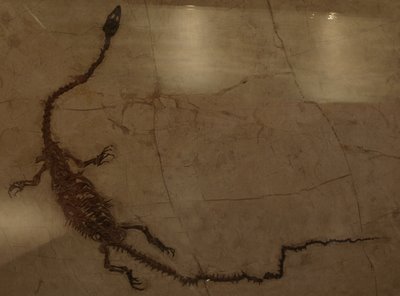
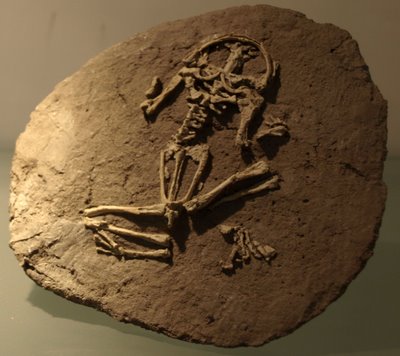
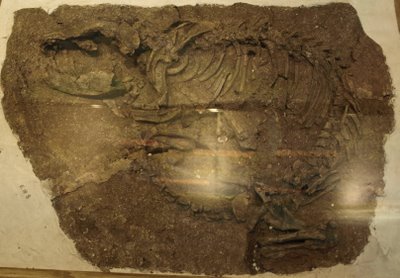
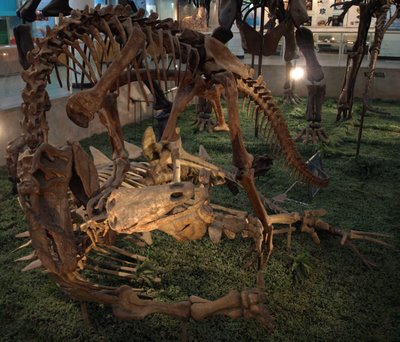
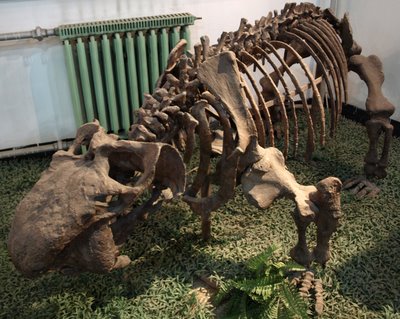
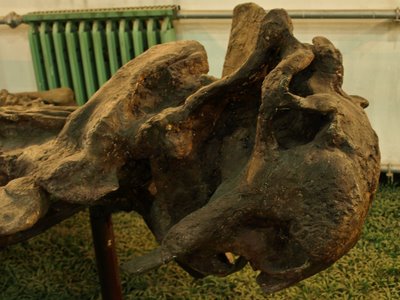
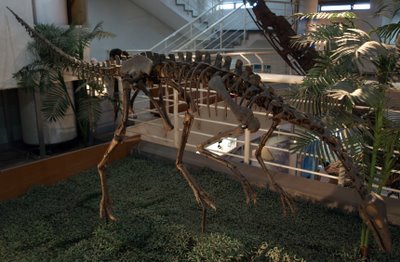
-PaleozoologicalMuseumOfChina-May23-08-712521.jpg)